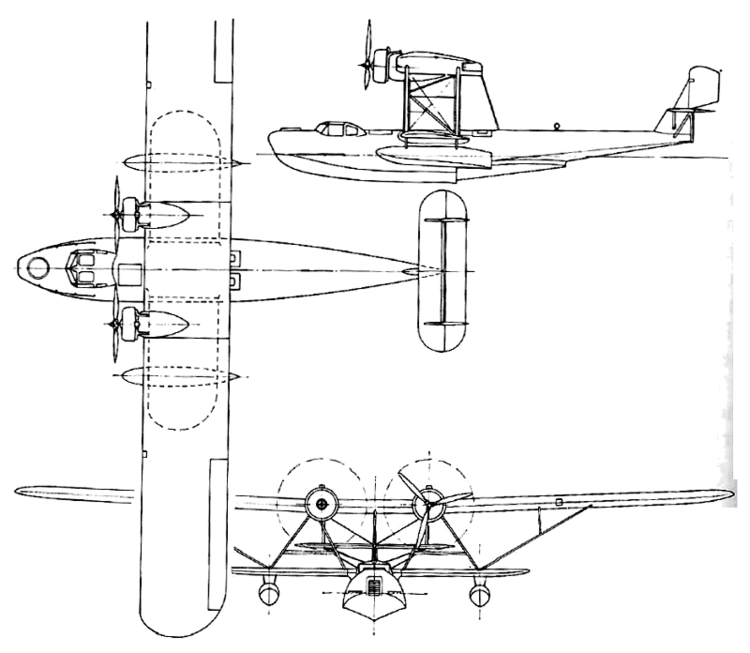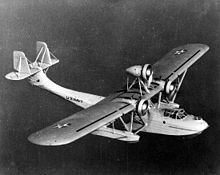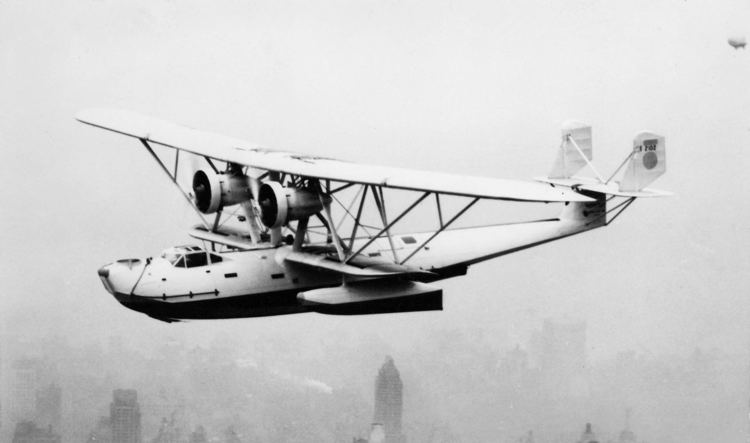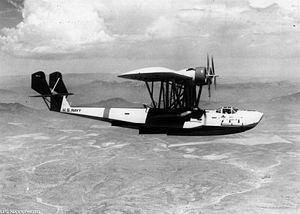Top speed 240 km/h Length 19 m First flight January 10, 1929 | Wingspan 30 m Retired 1941 | |
 | ||
United states navy consolidated p2y 1 flying boat takes off from san francisco an hd stock footage
The Consolidated P2Y was an American flying boat maritime patrol aircraft. The plane was a parasol monoplane with a fabric covered wing and aluminum hull.
Contents
- United states navy consolidated p2y 1 flying boat takes off from san francisco an hd stock footage
- Development
- Operational history
- Variants
- Operators
- Specifications P2Y 3
- References
Development

Initially created to compete for a U.S. Navy contract dated February 28, 1928, the prototype Model 9, XPY-1, was designed by Captain Dick Richardson and Isaac M. 'Mac' Laddon. Beginning construction in March 1928, the aircraft was ready for its first flight by the end of the year. Lieutenant A. W. Gorton made the first flight out of Anacostia NAS, Washington, D.C..

The production contract was opened to other bidders, and the Glenn L. Martin Company undercut and was awarded the contract to construct the plane as the Martin P3M-1 and P3M-2. Three P3M-1s and six P3M-2s were built; one XP2M-1 was also built to a similar design, powered by three Wright Cyclone engines; following the removal of the third engine it was redesignated XP2M-2. The idea of a third engine on the XPY-1 had been studied and rejected by Navy Bureau of Aeronautics staff.

A new contract was placed by the U.S. Navy on May 26, 1931, for a prototype of a developed version of the Model 9, XPY-1, designated the Model 22 Ranger by Consolidated. Incorporating features of the Model 16 Commodore such as the enclosed flight deck, designated the XP2Y-1 by the Navy, this new prototype had the same 100 ft parasol wing, but became a sesquiplane with a smaller wing mounted lower, at the top of the hull, replacing the booms that had supported the stabilizing pontoons on the XPY-1. Two Wright R-1820-E1 Cyclone engines were located close below the top wing and had narrow-chord cowlings. A third similar engine was mounted on a strut along the centerline above the wing, but removed after the first test in April 1932.

The Navy ordered 23 P2Y-3s as production models similar to the P2Y-2s that were modified from the original batch of P2Y-1.
Operational history

The Navy ordered 23 P2Y-1s on 7 July 1931. They were serving by mid-1933 with VP-10F and VP-5F squadrons which made a number of classic long-range formation flights."At least 21 P2Y-1s were modified to P2Y-2s in 1936 and flown by VP-5F and VP-10F until 1938, when they were transferred to VP-14 and VP-15.
The first P2Y-3s reached VP-7F in 1935, and this version was flown by VP-4F at Pearl Harbor and in 1939 was in operation with VP-19, VP-20, and VP-21. By the end of 1941, all the P2Y-2s and P2Y-3s had been withdrawn from operational use and were at Pensacola Naval Air Station.
The Colombian Air Force used one Commodore P2Y as a bomber in the Colombia-Peru War in 1932–1933.
The Imperial Japanese Navy Air Service evaluated the Consolidated P2Y as the "Consolidated Navy Experimental Type C Flying-Boat".
Variants
Operators
Specifications (P2Y-3)
Data from The Complete Encyclopedia of World Aircraft; range from American Aircraft of World War II
General characteristics
Performance
Armament
